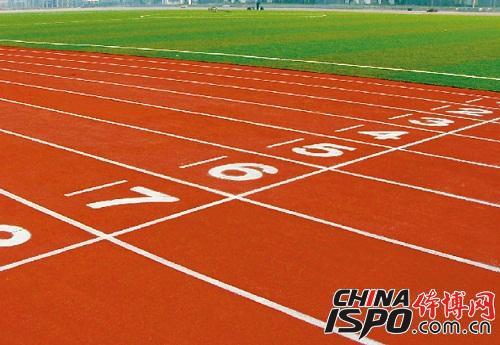Plastic tracks, also known as all-weather running tracks, are made from a combination of polyether, recycled tire rubber, EPDM rubber granules, PU particles, pigments, additives, and fillers. These surfaces offer excellent flatness, high compressive strength, proper hardness, and elasticity, which help athletes achieve better speed and technique. This not only enhances athletic performance but also reduces the risk of injuries. The material is composed of polyurethane rubber and other components, giving it a degree of elasticity and color retention. It is highly resistant to wear, UV damage, and aging, making it the internationally recognized best choice for outdoor sports facilities.

There are several types of plastic track materials:
(a) Breathable plastic tracks are a two-layer system made with polyurethane. The base layer consists of urethane-bonded black environmental rubber particles, while the top layer is a mixture of colored EPDM rubber and polyurethane, sprayed directly onto the surface using an SMG machine. They meet GB/14833-93 standards, offer good permeability, and are easy to maintain. They are cost-effective and commonly chosen by primary schools.
(b) Prefabricated plastic tracks are pre-made rolls produced in factories using natural and synthetic rubbers, mineral fillers, stabilizers, and colorants. These are vulcanized at high temperatures (280–300°C), embossed, and printed uniformly. They are ideal for professional stadiums but are expensive, making them unsuitable for most schools.
(c) Compound plastic tracks have a base layer of black environmentally friendly rubber particles bonded with polyurethane resin, and a top layer of colored EPDM granules embedded in polyurethane.
(d) Hybrid plastic tracks combine PU and black rubber particles in specific proportions. The materials are mixed on-site, activated with a catalyst, and then laid and vulcanized at room temperature. The surface is the only type of plastic track that meets national standards and is mainly used in professional competition venues. Both compound and hybrid tracks fall between breathable and full-plastic systems, offering higher quality than breathable but at a significantly higher cost.

Foundation requirements for plastic tracks vary depending on the type:
- Breathable, compound, and hybrid tracks do not require extremely strong foundations due to their breathability and water resistance. A cement foundation is usually sufficient.
- Prefabricated tracks only need special adhesives and can be installed on a compact base with minimal labor and machinery. They can be used after 24 hours.
Price estimates:
1. Mixed plastic tracks typically cost around $210 per square meter.
2. The cost of a cement base is approximately ¥180 (around ¥190 for asphalt), with a thickness of about 15 cm.
Choosing the right type of plastic track depends on budget, usage frequency, and the level of performance required. Each option has its own advantages and is suited to different environments and needs.
Stockpot,Hot Pot Accessories,Round Stockpots,Casserole
Foshan Shunde Oubao Luo Intelligent Catering Equipment Co., Ltd. , https://www.aobl-ch.com